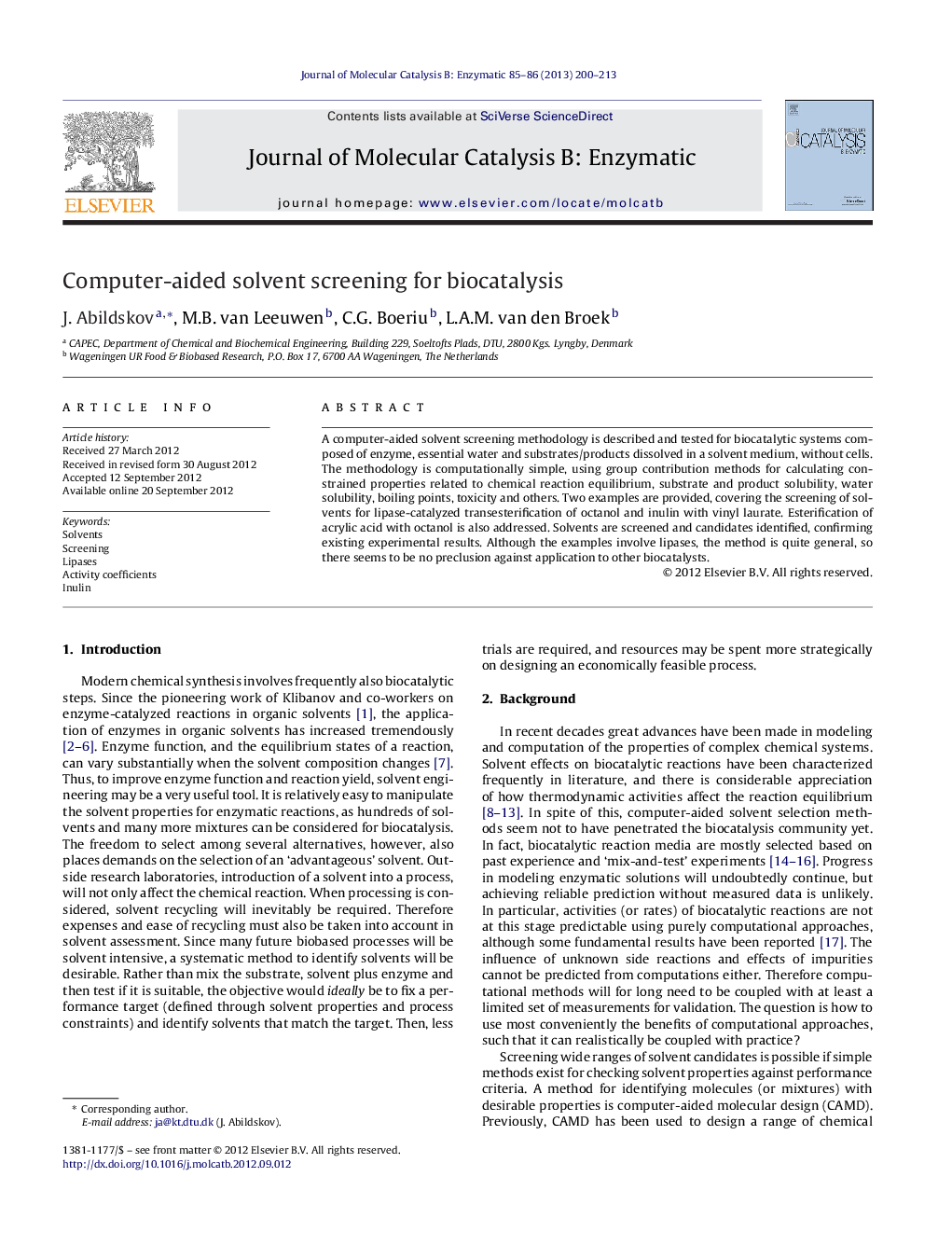| Article ID | Journal | Published Year | Pages | File Type |
|---|---|---|---|---|
| 70006 | Journal of Molecular Catalysis B: Enzymatic | 2013 | 14 Pages |
A computer-aided solvent screening methodology is described and tested for biocatalytic systems composed of enzyme, essential water and substrates/products dissolved in a solvent medium, without cells. The methodology is computationally simple, using group contribution methods for calculating constrained properties related to chemical reaction equilibrium, substrate and product solubility, water solubility, boiling points, toxicity and others. Two examples are provided, covering the screening of solvents for lipase-catalyzed transesterification of octanol and inulin with vinyl laurate. Esterification of acrylic acid with octanol is also addressed. Solvents are screened and candidates identified, confirming existing experimental results. Although the examples involve lipases, the method is quite general, so there seems to be no preclusion against application to other biocatalysts.
Graphical abstractFigure optionsDownload full-size imageDownload as PowerPoint slideHighlights► We describe a computer-aided solvent screening methodology for biocatalytic systems. ► The systems contain essential water, substrates/products, solvent medium and enzyme. ► The methodology is computationally simple using different constrained properties. ► Optimal solvent media for lipase (trans)esterification reactions are addressed. ► The examples given involve lipases but the technique can also be used for other enzymes.
